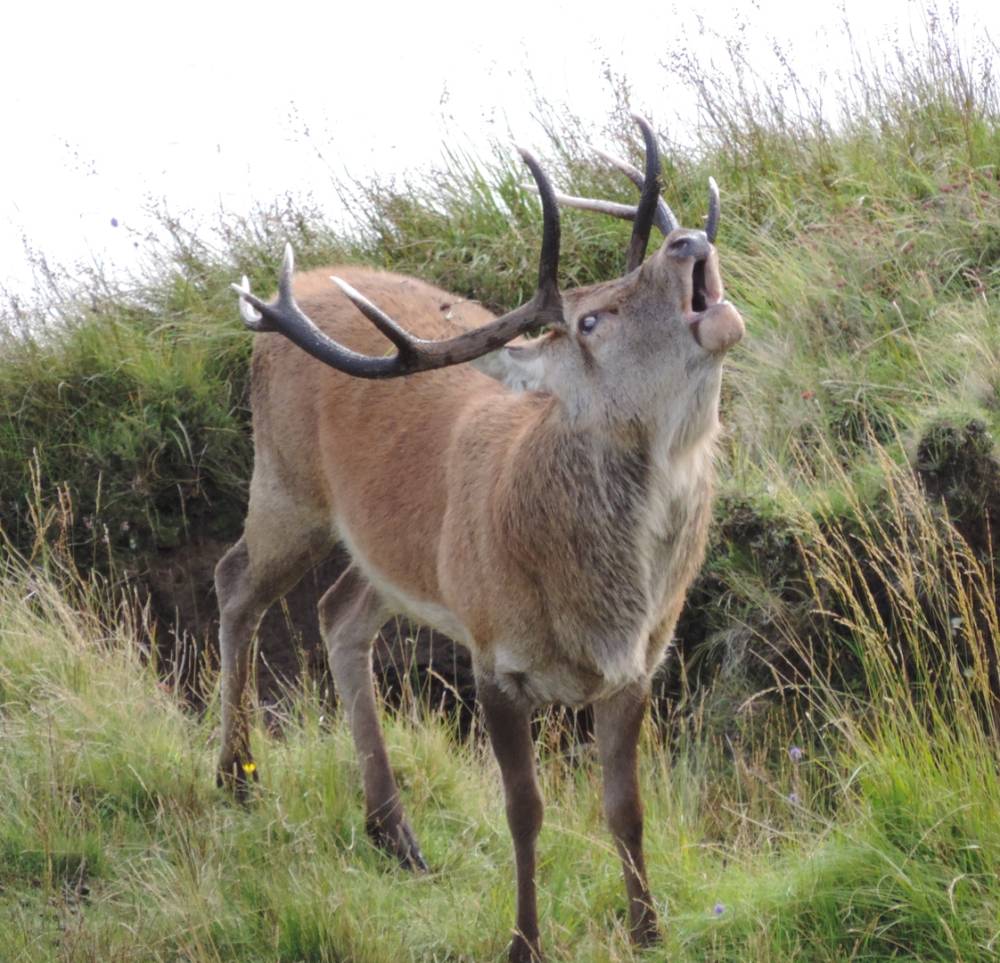Rum, an ancient Deer Park
Ali Morris
rum, a landscape without figures, john love, 2001
Location: Small IslesRum, an ancient Deer Park
In medieval times, the Lords of the Isles and then their descendants, the chiefs of Clanranald held the isle of Rum as their deer park, hence the nickname of Rìoghachd na Forraiste Fiadhaich (the Kingdom of the Wild Forrest) given to this wild mountainous island.
The Old Statistical Account for the Small Isles described how deer hunting was carried out before the age of firearms. At Orval, within the glen formed by the crater of one of Rum’s extinct volcanoes, two stone dikes started high up in the hills. They drew nearer to each other until they were only a few feet apart, forming a huge stone funnel opening up into a large circular stone enclosure, the Tigh na Sealg (the Hunting House). It was high enough to contain the deer and had built within it a number of little cells to hide in ambush.
When the chiefs came hunting, the tainchell (driving) started with their people fanning all over the island’s mountains and valleys to gather the deer and drive them into the deer trap where chief and noblemen would wait with their bows and arrows.
By 1787, Red Deer had become extinct on Rum but its later re-introduction and Rum's status as a National Nature Reserve has led to a Red Deer study which started in 1958 and continues to this day.
More information on visiting the area can be found here.
